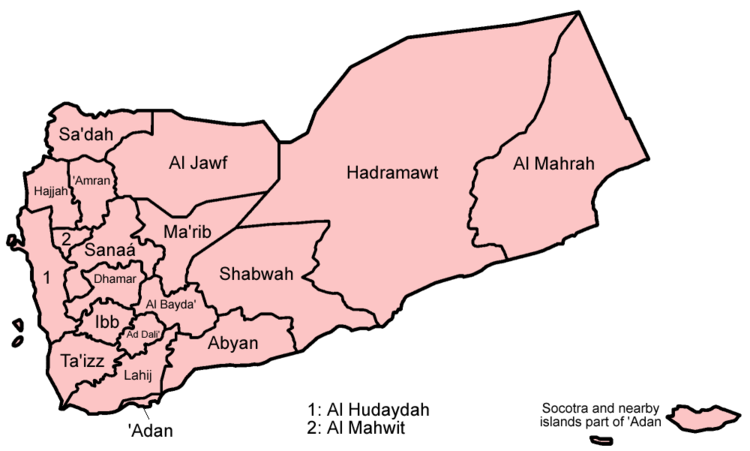Ann Arbor (Informed Comment) – The details of the alleged Houthi operation against Saudi Arabia are still murky, and Saudi Arabia has so far declined to provide its side of the story. Al Jazeera Arabic on Sunday rounded up the details provided by the Houthis and by its Yemeni sources.
First of all, Al Jazeera says, the bases the Houthis surrounded were on the Yemeni side of the border, in the far north of Saadeh. Saadeh is the home province of the Houthi or Helpers of God movement, which stems from the Zaydi Shiite branch of Islam. Iranian media is still reporting the battle as having occurred in Najran.
Saadeh borders the Saudi provinces of Najran, Asir and Jizan. The Saudi government had established bases in the far north of Saadeh, just over the border from Najran, for nationalist Yemeni troops loyal to President Abed Rabbo Mansour Hadi, whom the Houthis displaced from the capital of Sana’a in fall-winter 2014-2015.
The Houthis claim to have conducted a months-long cover operation to infiltrate Najran and Jizan provinces on the Saudi side, allowing them to surround the nationalist bases in northern Saadeh. In late August they sprang the trap, killing hundreds of nationalist troops and taking (according to the Houthis) some 2,000 of them captive. Video shows that they also captured American armored vehicles. (The Trump administration backs the Saudi war on the Houthis). They appear only now to have decided to make the whole thing public. Some reports suggest that they had wanted to hide the POWs, whom they have been interrogating for intelligence on Saudi military plans, because the Saudis have targeted POWs with airstrikes in the past (the allegation would be that Riyadh wanted to shut them up).
The Houthis also say that they captured some Saudi officers and troops detailed to the nationalist forces.
Presumably they announced that the operation took place in Najran itself as part of a psychological operation against the Saudi government, since if it had happened, it would have been an incredible blow to Saudi self-confidence. Even the loss of a Saudi-backed base just over the border into Yemen is a major defeat.
Saudi Arabia replied by sending fighter jets and Apache helicopter gunships forcing Houthi troops to withdraw south from the Najran border with their captives. This sort of air action, however, is not effective against the some 100,000 Houthi guerrillas, who presumably maintain their presence inside neighboring Saudi provinces. Al Jazeera says that the Houthis even have units not so far from the major Saudi city of Najran, which is near the border.
So the claims the Houthis made on Saturday, which implied that the bases captured were inside Saudi Arabia, are untrue. But aside from the geography, the rest of their account is not so implausible.
I pointed out on Sunday that the Saudi-United Arab Emirates alliance has broken up, and that Saudi and Emirates proxies are actively fighting each other in southern Yemen. The nationalist forces of Mansour Hadi were kicked out of Aden, along with their coalition partners, the Islah movement or Yemeni Muslim Brotherhood. It is unclear whether these southern disasters affected the nationalist command and control or logistics in the far north, but it could not have helped, and certainly would have been deadly for morale. (Seeing Mansour Hadi lose a second capital, Aden, after he lost Sana’a, couldn’t have been easy for forces still loyal to him).
Yemen had been ruled by a traditional Zaydi Imam until the 1960s, when a nationalist movement backed by Egypt overthrew him. By 1978, one of the nationalist officer, Ali Abdullah Saleh, emerged as a fairly typical Arab military dictator. He was forced to step down by the 2011-2012 Arab Spring youth revolution, and in February of 2012 Mansour Hadi won a referendum, with an 80% turnout.
Yemen began multiparty negotiations toward a new constitution and new parliamentary elections. But behind the scenes Ali Abdullah Saleh used his continuing propularity in the Yemeni military to form an alliance with the Houthis in hopes of coming back to power as a dictator. In fall of 2014 his troops let the Houthis into the capital and opened military weapons depots to them, They gradually forced Mansour Hadi out. Saleh found himself unexpectedly the junior partner of the Houthis, and ultimately they killed him. The Houthis made a push to take over the whole country, going down to Aden. About a third of Yemen is Zaydi Shiite, and they predominate in the northwest. Aden is largely Sunni and it was hard for them to keep it. But some Sunni tribes are with the Houthis, and some Zaydis are nationalists, so this struggle is not a simple Sunni-Shiite division.
This takeover by the Zaydi Shiite Houthis was viewed by the Saudis as an Iranian incursion, even though the Zaydis are very different from Iranian Twelver Shiites and are a local, indigenous movement. They have some Iranian backing but can’t be seen as mere proxies for Tehran. Saudi Wahhabism tends to be Shia-phobic. So the Saudis and the United Arab Emirates launched a war on the Houthis in spring of 2015. Although they drove them out of Aden and the south, they then got bogged down and have been stuck for the past four and a half years. At least 70,000 have been killed in the fighting, and 10 million are food insecure, with millions displaced. Yemen was already one of the poorest countries in the world but has been cast down to fifth world status.
Now the Saudi-backed groups and the Emirates-backed groups are fighting each other rather than the Houthis, freeing the latter up to undertake more ambitious counter-measures against the Saudis and the Saudi-backed nationalists.
——
Bonus video:
Al Jazeera English: “Yemen’s Houthi rebels release Saudi attack video”





 © 2025 All Rights Reserved
© 2025 All Rights Reserved